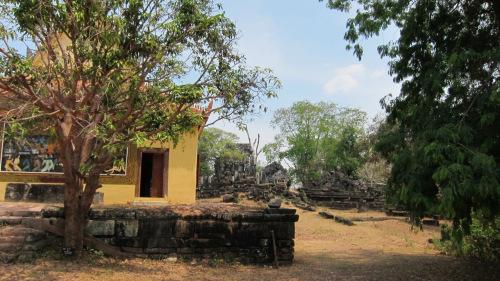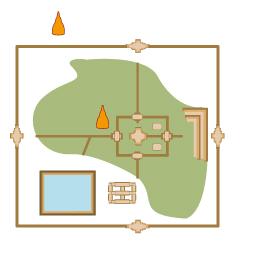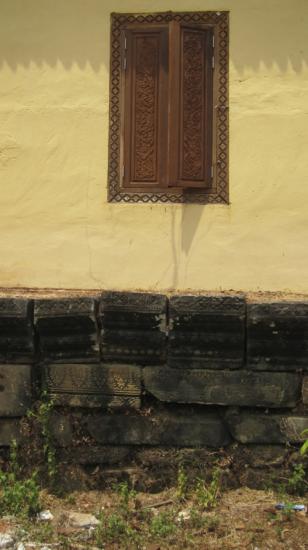Alison
Source - http://alisonincambodia.wordpress.com/2013/08/20/off-the-beaten-path-at-angkor-chau-srei-vibol/#more-1783
Last year I had the opportunity to do a small excavation at the site of Chau Srei Vibol. Although the excavation wasn’t very productive, I enjoyed spending several days at this beautiful and quiet site that doesn’t see many tourists.

The ancient ruin of Chau Srei Vibol sits next to a modern wat.
Chau Srei Vibol sits about 17 km directly east of Angkor Wat and was built in the 11th century. It is surrounded by a huge moat (about 1450 meters east-west and 970 meters north-south). Inside the moat is another laterite wall. The temple is located on top of a small hill that requires some light climbing.

This nice little map shows the placement of the temple on top of the hill. At the base of the hill is a small water tank.

Climbing up to see Chau Srei Vibol.
Also on top of the hill and directly next to the Angkorian ruins is a modern Wat. When we visited it was quiet and we didn’t see many people around. Since the temple is fairly collapsed you can do some climbing around to check out the picturesque ruins.

Chau Srei Vibol temple

The modern Wat has reused some of the Angkorian stones as part of their foundation.
The eastern portion of the site is still heavily forested, and when I visited last year (2012) it was still mined. Stay on the marked paths and away from the “Danger: Mines” signs and you’ll be fine. The upper part of the hill with the ruins and modern Wat are safe to walk around, as is the cleared area on the western half that includes the water reservoir.
There has been little scholarly work done on Chau Srei Vibol. It seems to be located in an area that may have been modified as part of the early water management network. A recent dissertation that employed Ground Penetrating Radar (GPR) showed evidence for some destroyed structures inside the enclosure. Our excavations were looking for evidence of post-Angkorian habitation inside the enclosure, but we found little evidence in our small excavation units.

The (dry) water reservoir at the base of the hill